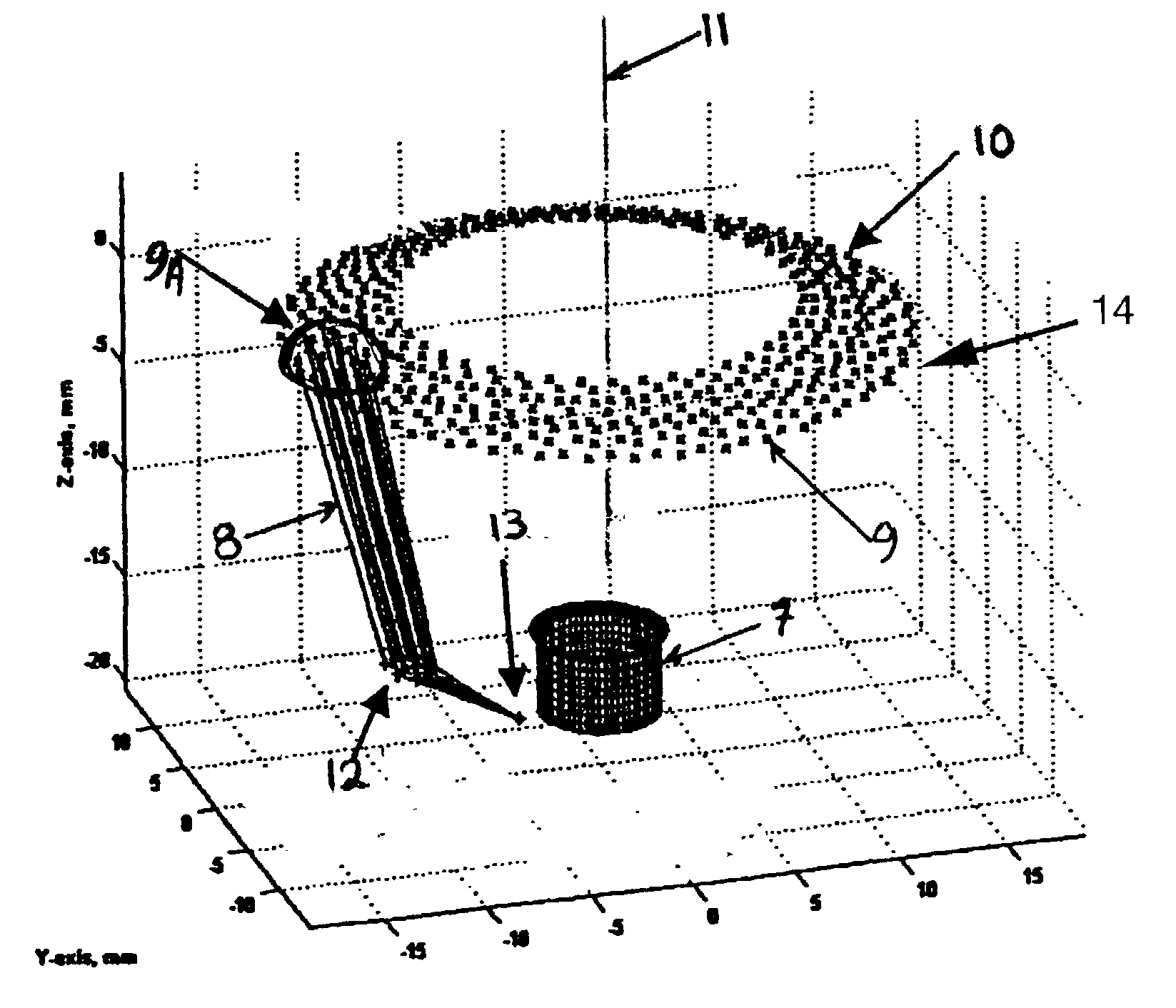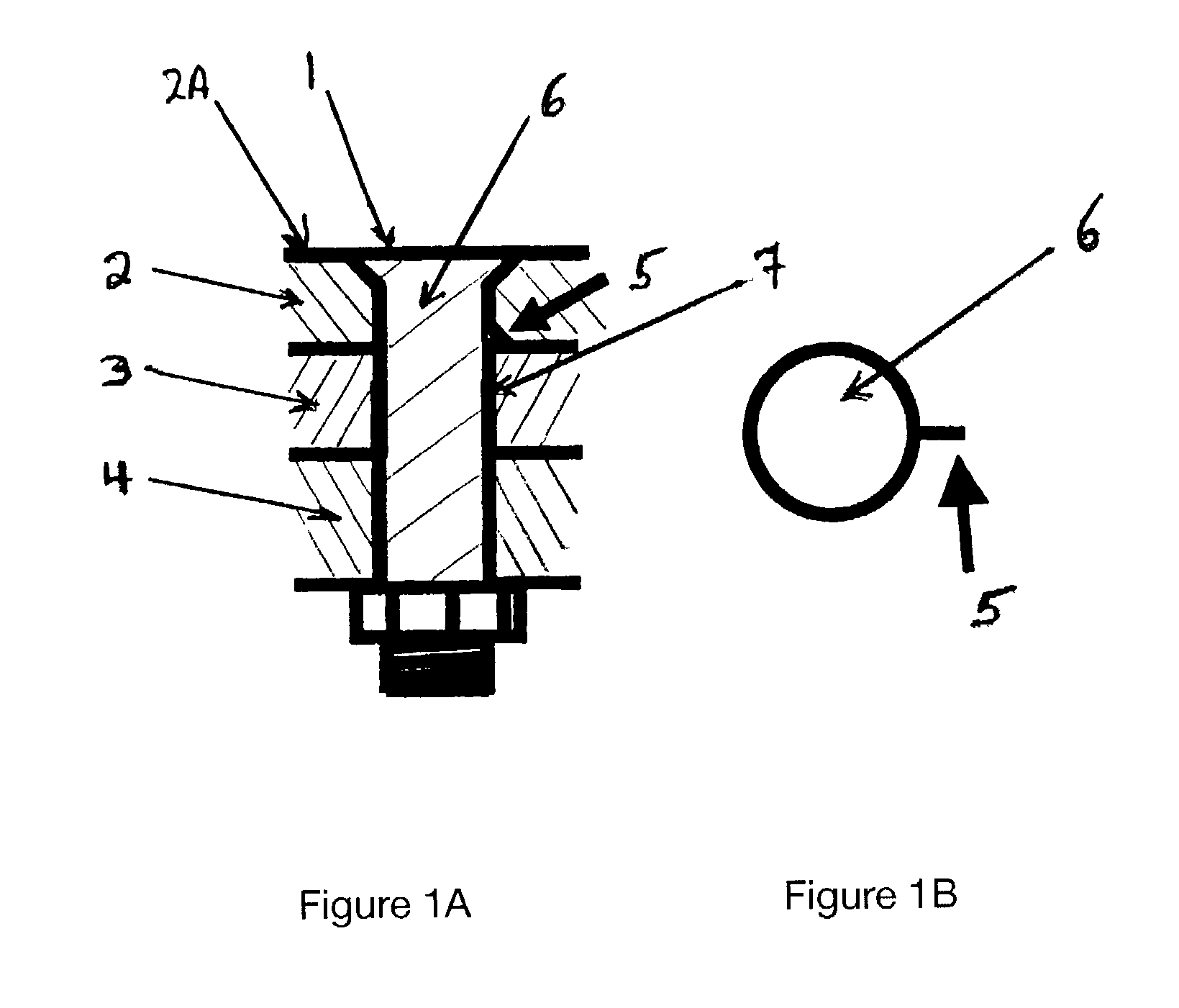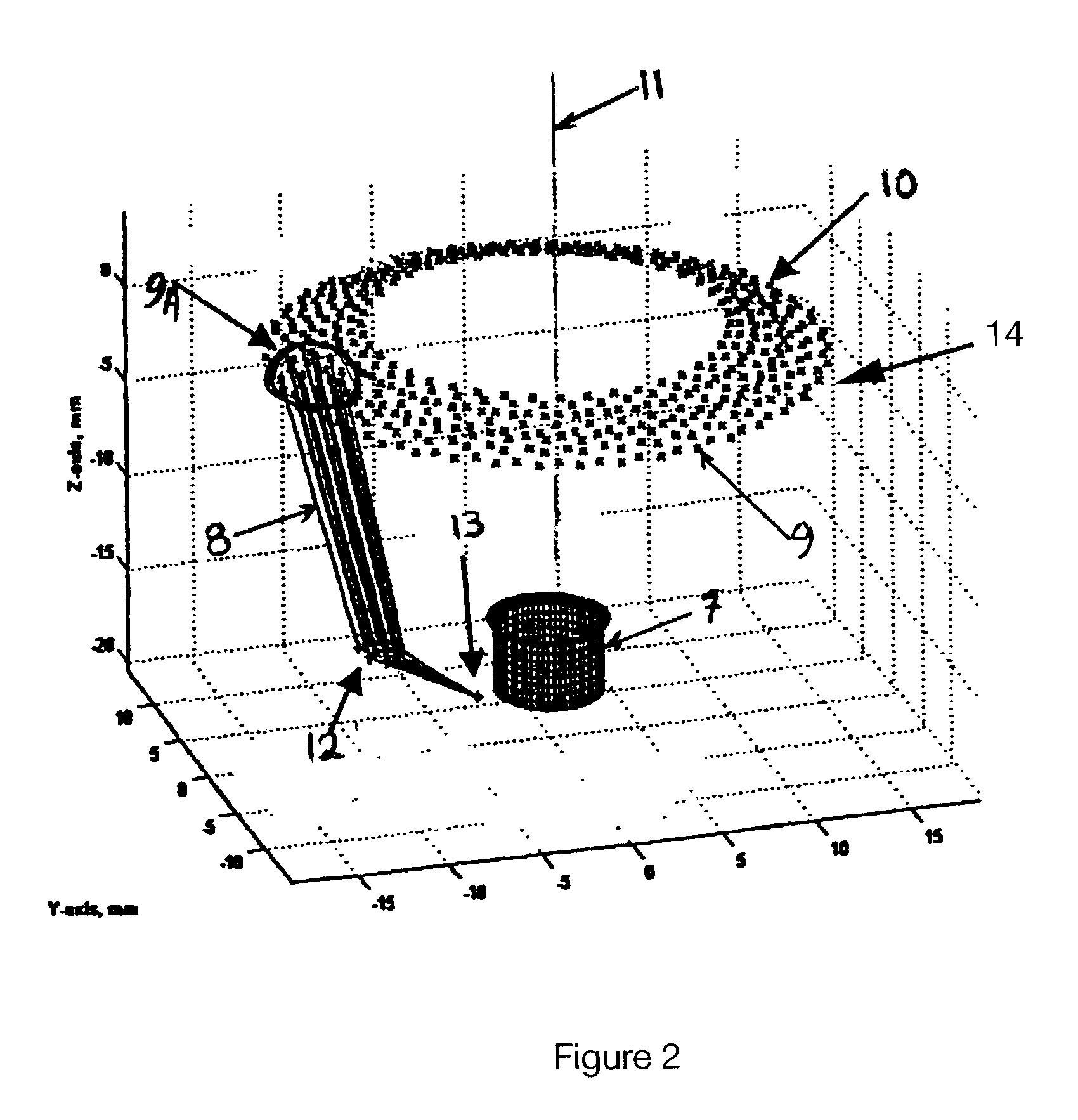Phased array ultrasonic NDT system for fastener inspections
a phased array and ultrasonic technology, applied in the direction of instruments, specific gravity measurement, magnetic property measurement, etc., can solve the problems of mechanical complexity, obsolescence and no longer maintainable, and serious structural failur
- Summary
- Abstract
- Description
- Claims
- Application Information
AI Technical Summary
Benefits of technology
Problems solved by technology
Method used
Image
Examples
Embodiment Construction
Detection Requirement
[0052]In the preferred embodiment of the invention, the object is to detect defects anywhere around the fastener hole wherein the defects are at least 0.030 of an inch in length. Typical fastener diameters range from 3 / 16 to 5 / 16 of an inch and skin thicknesses from 0.117 to 0.310 of an inch. FIG. 1A illustrates fastener 1 holding together layers 2, 3 and 4 of, typically, aluminum with faying surface crack 5 in first skin layer 2. FIG. 1B further illustrates crack 5 in a top view.
Scanning Using Phased Array Beams from Conic Surface
[0053]An angled beam is required in order to direct the ultrasonic beam under the fastener head 6 towards the fastener hole circumference 7 at the faying surface ⅔ interface. Phased array (PA) ultrasonic beams, as typified by beam 8, are preferably generated from a number of elements 9, typically piezoelectric crystals, distributed over a conic surface 10 that surrounds from above (i.e., looking down) a fastener opening placed beneath ...
PUM
| Property | Measurement | Unit |
|---|---|---|
| outer circumference | aaaaa | aaaaa |
| diameter | aaaaa | aaaaa |
| diameter | aaaaa | aaaaa |
Abstract
Description
Claims
Application Information
 Login to View More
Login to View More - R&D
- Intellectual Property
- Life Sciences
- Materials
- Tech Scout
- Unparalleled Data Quality
- Higher Quality Content
- 60% Fewer Hallucinations
Browse by: Latest US Patents, China's latest patents, Technical Efficacy Thesaurus, Application Domain, Technology Topic, Popular Technical Reports.
© 2025 PatSnap. All rights reserved.Legal|Privacy policy|Modern Slavery Act Transparency Statement|Sitemap|About US| Contact US: help@patsnap.com



